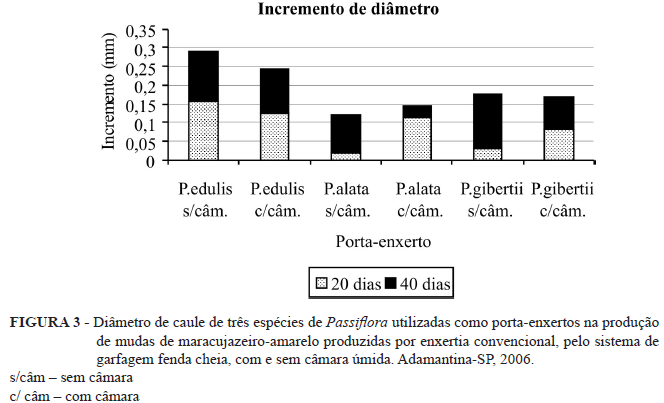The grafting of passion fruit might be the solution for the control of diseases of roots. Thus, with the objective of evaluating the development and survival of yellow passion fruit plants grafted on three rootstocks during the nursery phase, one experiment was carried in Adamantina, SP, Brazil, from December 2005 to April 2006. The experimental design was in randomized blocks in factorial scheme 3 x 2, with four replications. The studied factors were three rootstocks (P. edulis, P. alata and P.gibertii) in two environment (with and without humid chamber). The conventional grafting by cleft grafting method was used. The variables evaluated were: survival percentage and grafts height, rootstocks and grafts stem diameter, leaf number, aerial portion and roots fresh and dry weight. The species P. edulis and P. gibertii showed the best performance among the rootstocks. The greater survival percentages were observed in P. edulis and P. gibertii, with 100% and 98,8%. The use of P. alata as rootstocks to yellow passion fruit is viable, in despite of inferior results in the majority of the analyzed variable. The use of humid chamber favored the survival of grafts in P. alata.
Passiflora sp; asexual propagation; scion production; protected environment






